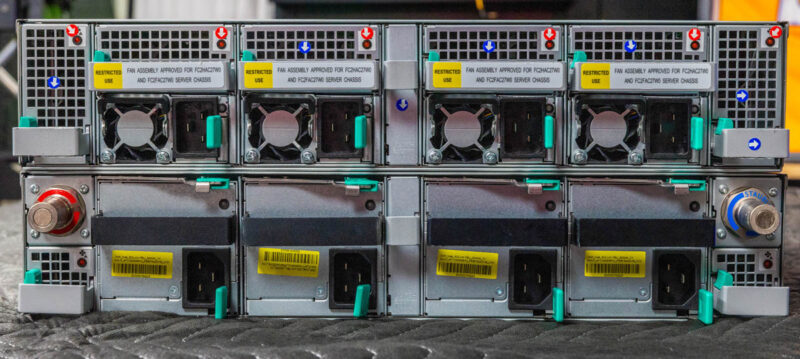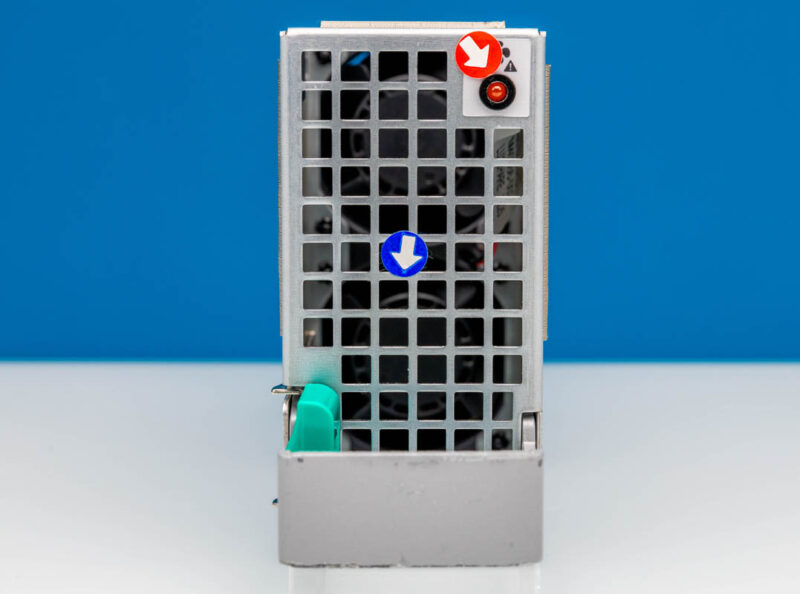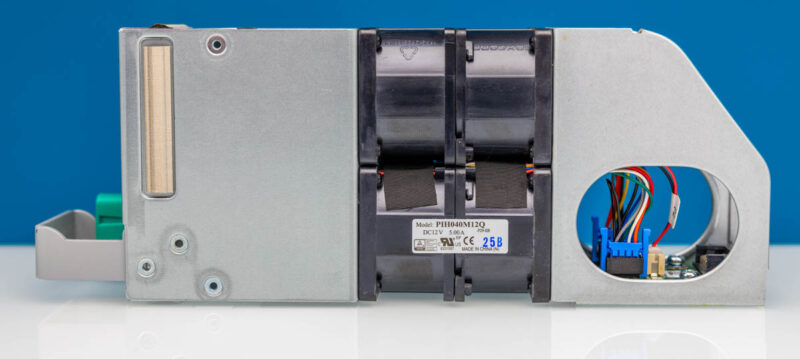MiTAC Intel Denali Pass Air-Cooled Rear
Here are the two systems stacked. We will look at the top air-cooled version first, then move to the bottom liquid-cooled system.

As we showed in the middle of the system, there are no fans. Instead, the chassis fans are integrated onto modules that also hold the power supplies.

The fan module slots into the system’s rear, and then the power supply is placed into the fan module. That is a really neat design. Most 2U 4-node servers either need to have smaller and less power-efficient fans on each node or have mid-plane fans that require chassis removal from a rack to service. Here, that problem is solved by having rear removable fan modules.

While the liquid-cooled version is focused on nearly no airflow, the air-cooled version tries to maximize airflow.

On the side of those fan and power assemblies, we find two more 2U fan modules.

These combine two 1U fan pairs atop one another.

These modules also have hot swap connectors.

In some servers, the air-cooled variants have little new. Both the air-cooled and liquid-cooled versions have some really neat designs, so let’s get to the liquid-cooled version next.
MiTAC Intel Denali Pass Liquid-Cooled Rear
On the liquid-cooled version, we actually get a simpler design, albeit one that will have things many have not seen before.

A great example is the 3000W liquid-cooled power supply. Instead of having fans like we saw on the air-cooled PSUs, these block airflow.

There are two nozzles for cooler and warmer fluid on each PSU, which is why we need that large CoolIT distribution manifold in the middle of the server.

On the left side, we have a nozzle and a fan module.

The Staubli nozzle is red, meaning it is the outlet with warmed liquid.

On the right side, we get another nozzle and fan module.

This is the blue or inlet nozzle for cooler liquid.

Below those nozzles, we have the system’s only two dual fan modules.

When we get to the nodes next, you will see that the goal is to remove the system’s heat by using circulating liquid. Still, not all heat is removed, so these small fans generate enough airflow to cool miscellaneous heat sources.

Of course, we need to get to the nodes to see how this MiTAC Intel DSG system can get away with two small fan modules for a system that can use 4kW or more of power. Let us get to that next.




It’s a work of art by former Intel guys. Unfortunately, no successors